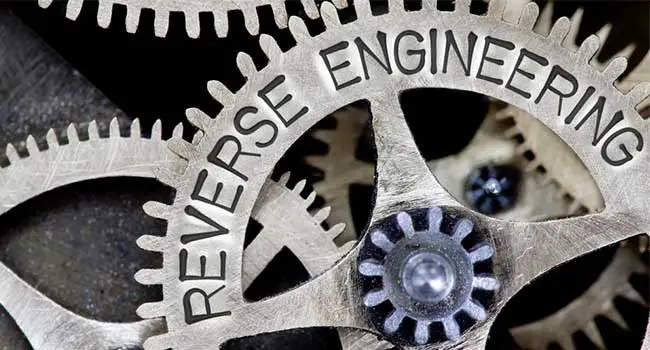In the competitive world of sports, the constant pursuit of an edge has led to the rise of reverse engineering as a powerful tool for technological innovation. Reverse engineering involves dismantling and analyzing existing products to gain insights into their design, functionality, and underlying principles. This process has opened up new avenues for sports technology companies to improve existing products, create groundbreaking innovations, and gain strategic insights into their competitors’ offerings.

Unveiling the Secrets of Innovation:

Reverse engineering allows sports technology companies to delve deep into the inner workings of their competitors’ products, uncovering design flaws, understanding material compositions, and identifying key performance factors. By meticulously examining every component and scrutinizing its purpose, engineers can gain valuable insights that inspire innovative solutions and improvements in their own products.

Identifying Weaknesses and Strengthening Performance:
Through reverse engineering, companies can identify vulnerabilities and weaknesses in existing products, enabling them to develop targeted solutions that address these shortcomings. By understanding the limitations and pain points of competitors’ technologies, sports technology companies can create products that offer superior performance, reliability, and user experience.
Accelerating Product Development:
Reverse engineering serves as an invaluable tool for accelerating product development cycles. By studying existing products, companies can bypass the initial stages of research and development, gaining a head start in the innovation process. This rapid prototyping approach allows them to bring new products to market faster, gaining a competitive advantage and maximizing their market share.
Understanding Market Trends and Consumer Needs:
Reverse engineering provides insights into the latest market trends and consumer preferences. By analyzing competitors’ products, sports technology companies can identify emerging technologies, evolving design aesthetics, and shifting consumer demands. This knowledge enables them to adapt their own products and marketing strategies to align with the ever-changing preferences of athletes and sports enthusiasts.
Uncovering Hidden Intellectual Property:
Reverse engineering can also uncover hidden intellectual property embedded within competitors’ products. By identifying patented technologies or innovative design elements, companies can protect their own intellectual property rights and avoid potential legal disputes. This strategic intelligence is crucial for safeguarding a company’s competitive advantage and ensuring its long-term success.
In conclusion, the unseen world of reverse engineering in sports technology is a fascinating realm of innovation, knowledge acquisition, and strategic advantage. By delving into the intricate details of existing products, companies gain invaluable insights that inspire new ideas, accelerate product development, and uncover market trends. As the sports technology industry continues to evolve, reverse engineering will remain a potent force driving progress and shaping the future of athletic performance and enjoyment.## The Unseen World Of Reverse Engineering In Sports Technology
Executive Summary:
Reverse engineering is the process of taking an existing product apart and analyzing its design to create a new product that performs similar or better functions. It is a common practice in many industries, including sports technology. Athletes and sports equipment manufacturers are always looking for ways to improve performance. They are constantly looking for ways to improve their products by copying strategies used elsewhere. Reverse engineering is one way to achieve these goals.
Introduction:
Reverse engineering is not just about copying products. It is about understanding how they work and improving upon their original ideas. Reverse engineering has had a profound impact on the development of sports technology by allowing manufacturers to innovate and create new products that are both more effective and efficient.
Top 5 Subtopics
The Five Most Important Techniques of Reverse Engineering
Reverse engineering is not limited to the purpose of competition. It is also commonly used as a means of continuous product improvement. Manufacturers can use this method to disassemble and interrogate a product so as to better understand how it was made. The intention can be either to create new products from the information that is obtained or to make improvements on them.
- Examining the product’s construction: This involves carefully examining the product to identify its components, materials, assembly methods, and manufacturing processes.
- Analyzing the product’s function: This involves testing the product and collecting data on its performance.
- Creating a model of the product: This involves creating a 3D model or CAD drawing of the product.
- Creating a prototype of the product: This involves creating a working model of the product.
- Testing and validating the prototype: This involves testing the prototype to ensure that it meets the desired requirements.
The Legal Considerations of Reverse Engineering:
It is important to note that reverse engineering is not always legal. Patent laws protect inventions, copyright protects creative expression, and trademarks protect brand identities. Some applications of this technology can be construed as IP infringement. In the United States, the Digital Millennium Copyright Act (DMCA) established that circumventing a technological access restriction is illegal. This could be applied to tools and methods used in reverse engineering. Several countries have fair use laws that include reverse engineering as a permissible activity.
- Fair use: The DMCA includes an exemption for fair use, which allows certain uses of copyrighted material without the permission of the copyright holder.
- Patent law: Reverse engineering may be legal under patent law in some cases.
- Trade secret law: Reverse engineering is generally not limited by trade secret laws.
- Open source software: Reverse engineering is often allowed for open source software.
Different Areas in the Sports Industry Where Reverse Engineering is Used
Reverse engineering plays a significant role in competition scenarios. One of the primary reasons reverse engineering is used in the sports industry is to assist athletes in gaining an edge over their competitors. They do this by enhancing their ability to determine how certain aspects of a specific sport can be improved, such as evaluating a particular technique or training methods.
- Product development: Reverse engineering can be used to develop new products that are better than existing products.
- Manufacturing: Reverse engineering can be used to manufacture products that are cheaper than existing products.
- Quality control: Reverse engineering can be used to ensure that products meet the desired quality standards.
- Repair and maintenance: Reverse engineering can be used to repair and maintain products.
- Forensic analysis: Reverse engineering can be used to investigate product failures.
Ways That Sports and Athletes Benefit From Reverse Engineering:
Reverse engineering has revolutionized the world of sports by providing athletes unprecedented access to information about their equipment. It has also allowed them to customize their equipment in ways that were not previously possible. This process has enabled athletes to perform better and achieve new levels of success.
- Improved performance: Reverse engineering can help athletes improve their performance by giving them a better understanding of how their equipment works and how it can be used to their advantage.
- Increased safety: Reverse engineering can help increase the safety of athletes by identifying potential hazards and developing safety features.
- Reduced costs: Reverse engineering can help reduce the costs of sports equipment by allowing manufacturers to use cheaper materials and manufacturing processes.
- Greater accessibility: Reverse engineering can help make sports equipment more accessible to athletes of all ages and abilities.
Challenges Involved in the Use of Reverse Engineering
With the many benefits of this practice in sports, there are also a number of common obstacles that can be encountered when using reverse engineering. The obstacles can either be caused by technological constraints or external factors. Some obstacles affect the quality of the end product while others can create unfavorable (and expensive) situations that can negatively impact a business. The following are examples of the challenges often associated with reverse engineering:
- Lack of access to the original product: Sometimes, it is not possible to obtain the original product.
- Intellectual property rights: Reverse engineering may be illegal if it infringes on intellectual property rights, including patents, copyrights, and trade secrets.
- Complexity of the product: Some products are very complex and difficult to reverse engineer.
- Cost: Reverse engineering can be expensive.
- Time: Reverse engineering a product can take a substantial amount of time.
Due to these challenges, it is important for businesses that wish to use reverse engineering to do so carefully and ethically. It is also important to consider the potential risks and rewards.
Conclusion:
Reverse engineering is a powerful tool that has the potential to revolutionize the sports industry. It can be used to develop new products, improve existing products, and reduce costs. However, it is important to use reverse engineering ethically and legally.
Keyword Phrase Tags:
- Reverse engineering in sports technology
- Reverse Engineering Sports Equipment
- The Ethics of Reverse Engineering
- Ways to use Reverse Engineering
- Benefits of Reverse Engineering in Sports

Very interesting. I didn’t know that reverse engineering was used in sports technology.
This is just cheating! Why can’t people come up with their own ideas?
I’m impressed by the creativity of these engineers. They’re finding new ways to improve products that we already love.
I’m not sure if this is a good thing or a bad thing. On the one hand, it’s great that we can get new products that are cheaper and better. But on the other hand, it could lead to less innovation in the industry.
I’m too lazy to read this whole article. Can someone give me a summary?
This is old news! Reverse engineering has been used in sports technology for years.
I wonder if I can reverse engineer my wife’s brain to make her more loving.
The legal risks of reverse engineering are often overstated. As long as you don’t infringe on any patents, you’re usually safe.
I’m going to reverse engineer the human body to create a new super-athlete.